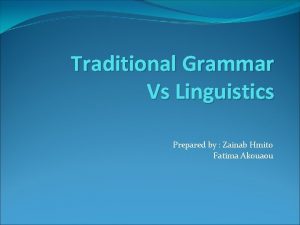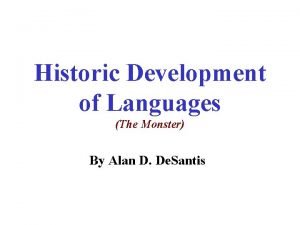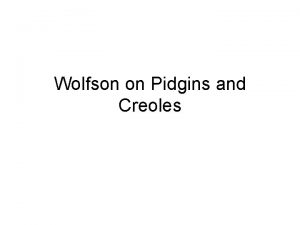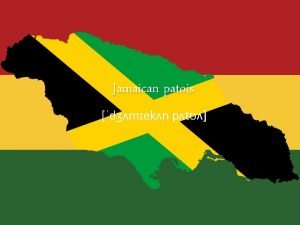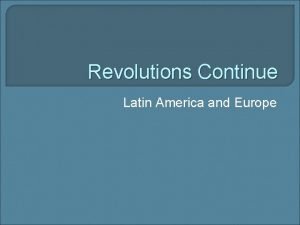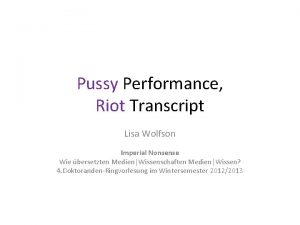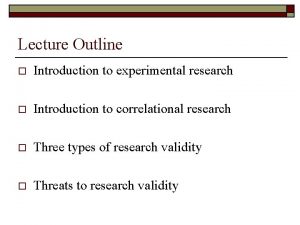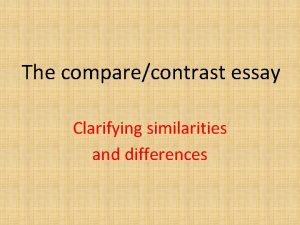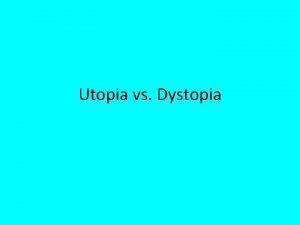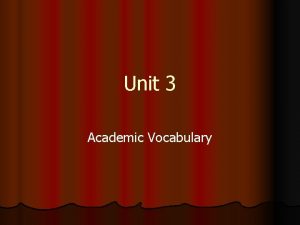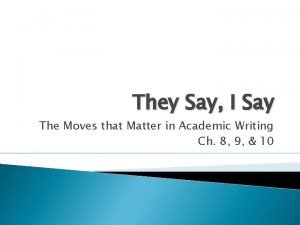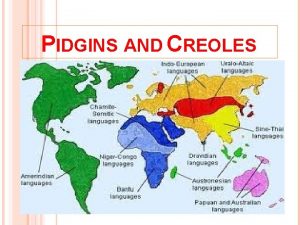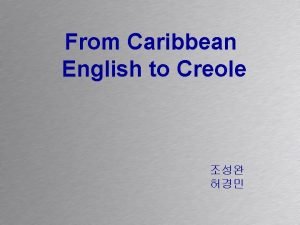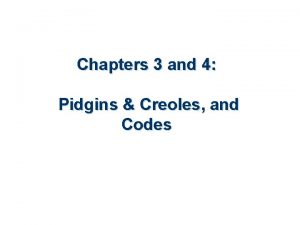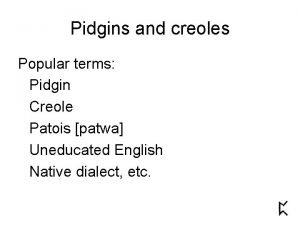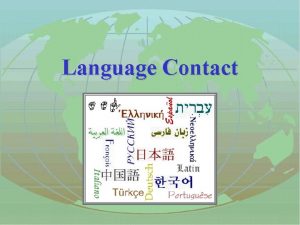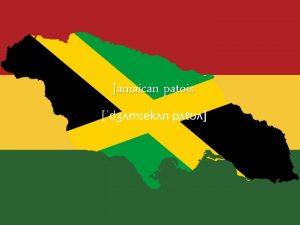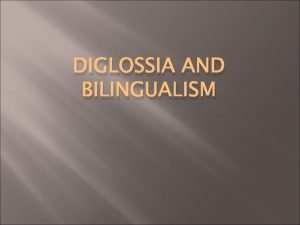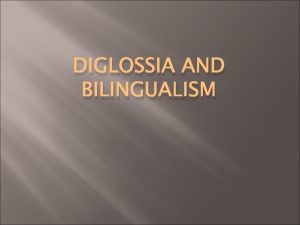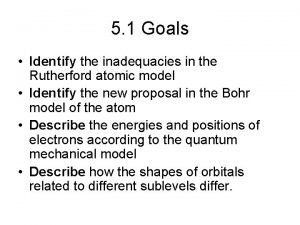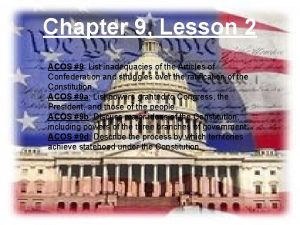Wolfson on Pidgins and Creoles Inadequacies of definition


















- Slides: 18

Wolfson on Pidgins and Creoles

Inadequacies of definition • with the best will in the world, scholars have not been able to arrive at a satisfactory linguistic definition of pidgin and creole languages in the sense that it truly serves to distinguish them from other languages. Thus, although pidgins and creoles share certain linguistic features -which make them typologically different from most other languages, these same features are found to exist in languages which do not have the linguistic or historical background common to pidgin and creole languages.

Attempt at definition part one • Because creoles are, by definition, derived from pidgins, we begin with a description of the characteristics of pidgin languages and of theories which explain their origins and development. • pidgins are no one's native language. They arise in situations of contact between speakers of mutually unintelligible languages and develop into relatively stable linguistic systems with their own syntax, lexicon (vocabulary), and phonology.

Definition part 2 • The fact that a pidgin has, by definition no native speakers has two important implications. On the one hand, it follows that in order for a language to qualify as a pidgin it must be sufficiently different • On the other hand, because pidgin languages are native to no one, it follows that all of their speakers are bilinguals. • How is the classification as “bilingual” relevant or problematic?

Argument for UG • Pidgins are contact languages which develop between people who need to interact and who have no common language…If, however, pidgin speakers intermarry and form a community where the pidgin becomes the common language, the children of these speakers acquire the language in the way all children acquire first languages, and, because the language must now function as the main or only means of communication, it develops a much more extensive vocabulary and syntactic system. Once a pidgin gains native speakers, it becomes classified as a creole language.

Language evolves? • If the interlingual contact is prolonged and institutionalized, (as in of slavery, the presence of foreign military troops, or the marriage of Tarzan and Jane) then the pidgin becomes fixed, and newcomers to that inter-lingual scene must learn it as they would learn Esperanto. … and so begins the process of evolution which may someday result. . . in a creole if speakers begin using it as a native language. • Who knows what Esperanto is?

Politics plays a role • Pidgins and creoles developed by subordinated groups, Wolfson tells us “it has been postulated (cf. Whinnom (1971) that: "since it would appear to be true that no pidgin has ever consolidated itself in other than a multilingual situation (New Guinea Pidgin, Hawaiian Pidgin, the Caribbean Creoles, Sango, Chinook, etc. ) it may well be that no simple bilingual situation ever gives rise to a pidgin" (Whinnom 1971: 104).

There are 4 theories to the origin of these (inter) languages (wc? ) • 1. The baby-talk or foreigner-talk theory • 2. The independent Parallel Development Theory or theory of polygenesis • 3. Pidgin languages arose from the nautical jargon used by sailors during the period of extensive exploration which began in the fifteenth century. • 4. theory of monogenesis. The most extreme or strong version of this theory holds that all pidgins had a single common origin (Sabir)

The baby-talk or foreigner-talk theory • the masters, in accommodating their speech to make it intelligible their workers, used a much reduced morphological and syntactic system which then served as the model for these language learners. …, there is evidence to suggest that this process could only have been one ingredient in their development. …, one important piece of counterevidence is that although pidgin languages are characterized by morphological reduction, they also frequently contain some features which are morphologically more complicated than the source language

The independent Parallel Development Theory: theory of polygenesis • Hall (1962) holds that since pidgins arose in separate situations, each must be considered to have developed independently. Thus, , the pidgin languages "come from" French or English or whatever European language served as the source for the lexicon, and they should be considered varieties of these languages. The difficulty with this theory is that it cannot account for the wellknown fact that European-based pidgin languages are very similar to one another in spite of the fact that some are spoken along the shores and islands of the Atlantic Ocean and others in the Pacific Ocean area, with little likelihood of contact between speakers in the two fardistant regions.

3. Pidgin languages arose from the nautical jargon. • The evidence for this theory is the existence of nautical items in pidgins and creoles which derive their lexicons principally from European languages, but since only a few such elements exist, theory cannot be considered adequate to explain the many structural similarities among European-based creole and pidgin languages.

4. theory of monogenesis • the asimilarity among the pidgin and creole languages of both the Atlantic and the Pacific has given rise to a related, but far more comprehensive, theory concerning the origin of this category of languages. The most extreme or strong version of this theory holds that all pidgins had a single common origin in Sabir, a Mediterranean trade language which flourished during the fourteenth and fifteenth centuries

languages and language learning in contact situations have in common much that is universal • Perhaps it would be better to look for a "common" origin in another sense; the possibility of universal patterns of behavior appropriate to contact situations pidgins and creoles because, fundamentally, languages are alike…humans are programmed to acquire Language rather than any particular language. It is not being suggested that one is consciously aware of how one adjusts one’s language behavior. But that one does adjust and that people of different linguistic backgrounds adjust their language behavior in similar ways, suggests that the behavior is rule-governed and may be the result of linguistic universals. (Todd 1974: 42)

Again UG raises it’s head • Bickerton (1981) in his famous book, Roots of Language. argues that the origin of creoles and the way children acquire their first language are basically similar and that both are similar to the origin of language. The origin of creole languages and their striking similarities to one another are explained by postulating a universal cognitive map, much like that proposed by Chomsky (1968). Bickerton's theory, generally known as the bioprogram hypothesis, makes use of an analysis of second language

Bickerton's theory: interesting and clearly described, albeit impossible to prove • The child does not, initially, "learn language. " As he develops, the genetic program for language which is hominid inheritance unrolls exactly as does the genetic program that determines his increase in size, muscular control, etc. "Learning" consists of adapting this program, revising it, adjusting it to fit the realities of the cultural language he encounters. Without such a program, the simplest of cultural languages would be unlearnable. But the learning process is not without its tensions-the child tends to hang on to his innate grammar for as long as possible-so that the "learning trajectory" of any human child will show traces of the bioprogram, and bioprogram rules and structures may make their way into adult speech whenever the model of the cultural language is weakened. • This, then, in outline is the unified theory of language acquisition, creole language origins, and general language origins for which the present volume has amassed numerous and diverse types of evidence. (Bickerton 1981: 297)

Again with the politics – what we know • “there is no doubt that they have much in common from the social point of view. With few exceptions, these languages are spoken by people at the very bottom of the socioeconomic structure. Many pidgin and creole speakers lack formal education. Where one of these languages exists side by side with the standard language from which its vocabulary is derived, it will nearly always be the subordinate language. In general, pidgin and creole languages are seen, by their own speakers as well as by others, as corruptions of the infinitely more prestigious standard languages. ” (why? ) • What exceptions can you think of?

Some questions Painful as it may be, we must always recognize that the low esteem accorded these languages is symbolic of sociocultural attitudes toward their speakers. • How or where have you experienced creoles or pidgins? • How do you feel about them? • How does this knowledge apply to sla and your work in the classroom? • Change society or change the language learner?

More questions • Would Spanglish, Chinglish be pidgins, creoles or other? • Are there words for other interlanguages (is that the right word – I’m serious) German? French? etc.
 Strengths and weaknesses of traditional grammar
Strengths and weaknesses of traditional grammar Pidgins monster
Pidgins monster Nautical jargon theory
Nautical jargon theory What is pidgin
What is pidgin Creoles
Creoles Peninsulares creoles mestizos
Peninsulares creoles mestizos Pussy
Pussy Magnetostiction
Magnetostiction Marcia wolfson ray
Marcia wolfson ray Wolfson bell schedule
Wolfson bell schedule Definition essay thesis examples
Definition essay thesis examples Operational definition
Operational definition Similarities and differences essay
Similarities and differences essay Red orange white pink purple
Red orange white pink purple Expository essay sentence
Expository essay sentence Characteristics of sanitary well
Characteristics of sanitary well Define utopia and dystopia
Define utopia and dystopia Aside in drama definition
Aside in drama definition Metacommentary they say i say
Metacommentary they say i say
